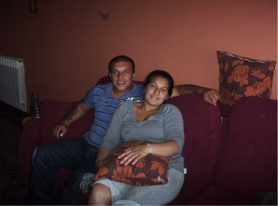Our work in housing[editar]
Since 1999, the FSG has been developing various projects in the field of housing.
In 1999, the FSG launched a project of accompaniment of families re-housed by the municipal housing company, which supposed the initiation of a housing line of action in the FSG’s work. Over the years, this experience was transferred to and consolidated in other Autonomous Communities of Spain such as Asturias, Navarre, Murcia, Galicia, Andalusia or Castile-León, allowing the FSG to respond to explicit demands of the regional and local administrations as well as to the reality experienced by beneficiary families.
The Housing Area of the FSG develops two strategic lines of action, with a view to solve the situation of residential exclusion still affecting an important proportion of the Roma population in Spain:
- Facilitate the access of the Roma community to decent housing in inclusive and mainstream contexts.
- Advance knowledge of the situation of the Roma community in relation to housing, with a view to contributing to and influencing the development of policies and action plans.
A turning point in addressing the housing inequalities experienced by the Roma community was reached with the elaboration of the Housing Map of the Roma Community in Spain, 2007 by the FSG in the framework of the Collaboration agreement signed with the Spanish Ministry of Housing in 2006 and 2007. It contributed to achieving an up-to-date diagnosis of the housing situation of Roma and to identifying the principal pockets of inequality and exclusion.
Study-Map on housing and Roma Population 2015
In 2012, the spanish government elaborated the National Roma Integration Strategy 2012-2020, which includes actions in four key areas (education, employment, housing and health) with year objectives reviewed by the European Commission. To accomplish these objectives, in the area of housing a replication of the Study Map on Housing and the Roma Community 2007 was set to be made in 2015. In this context, the Ministry of Health, Social Services and Equality (MSSSI) issued a tender and awarded the contract to carry out the study to the Fundación Secretariado Gitano (FSG), which developed the task in collaboration with Daleph. This nationwide Study-Map was conducted under the supervision of the Directorate-General for Family and Children's Services of the Ministry of Health, Social Services and Equality, with the support, on a consultative basis, of representatives of the Housing Working of the State Council of the Roma People, of the Ministry of Public Works and invited experts.
The methodology used was similar to that used in the previous studies in 2007 and 1991 (also undertaken by the FSG), in order to be able to compare the information obtained and observe the changes occurred over the last years.
Some of the conclusions of the study-Map 2015 are as follows (executive summary can be downloaded here):
- Despite the cliché that links Roma population with slum housing and segregated settings, results show that a 92.88% of the Roma population live in standard housing.
- The slum housing rate of Roma households has decreased (from 10% in the first study carried out in 1991 to 3.9% in the 2007 study and 2.1% in the 2015 study). The same trend is observed as regards sub-standard housing (down from 21.4% in 1991, to 7.8% in 2007 and 6.46% in 2015). The Study-Map shows that in those municipalities where interventions for residential inclusion of Roma families were carried out, progress and improvements occurred at all levels: living conditions, access to employment, children’s education, etc.).
- Despite this positive trend, still more than 9,000 Roma families in Spain live in sub-standard housing conditions without the minimum standards of habitability (of them, still more than 2,000 live in shacks).
- The Study-Map shows that the economic crisis has affected the socio-residential situation of the Roma population: there is a downward trend in the access to free-market housing (which is considered an important element of standardadisation in social inclusion processes); an increase in subsidised housing (which means that many families had to resort to public support) and an increase in other forms of access to housing (an indicator that housing needs have not been fully covered and families and families are forced to look for non-standard options like self-construction or living in other types of constructions).
- The Study-Map also shows that in the past few years, as a consequence of the economic crisis, the most vulnerable neighborhoods have been the most neglected in terms of public investment, which leads to a clear risk of deterioration of utilities, facilities and services.
Lines of work developed by the FSG
- Political and institutional action directed at the administrations with competencies in this matter and at other public and private organisations, at the European, national, regional or local level for the development of policies aiming to reduce inequalities in matters of housing between the Roma and non-Rom population, and to resolve the principal contemporary problems of Roma: the eradication of slums and substandard housing. Of particular relevance are the State Housing and Rehabilitation Plan 2009-2012 (Plan Estatal de Vivienda y Rehabilitación [PEVR] 2009-2012) and the modification of Art.7 of the Regulation on the European Regional Development Fund (ERDF).
- Direct intervention with Roma families: assistance and accompaniment of Roma families to foster their access to mainstream housing, including re-housing programmes and incorporation into new contexts, as well as mediation in situations of conflict emerging from such re-housing processes.
- Active participation in programmes of slum eradication and rehabilitation of deteriorated neighbourhoods in various Autonomous Communities, contributing to achieving the best possible adaptation of these programmes to the needs of families, and supporting competent administrations not only in the design but also in the continuous monitoring of these programmes.








